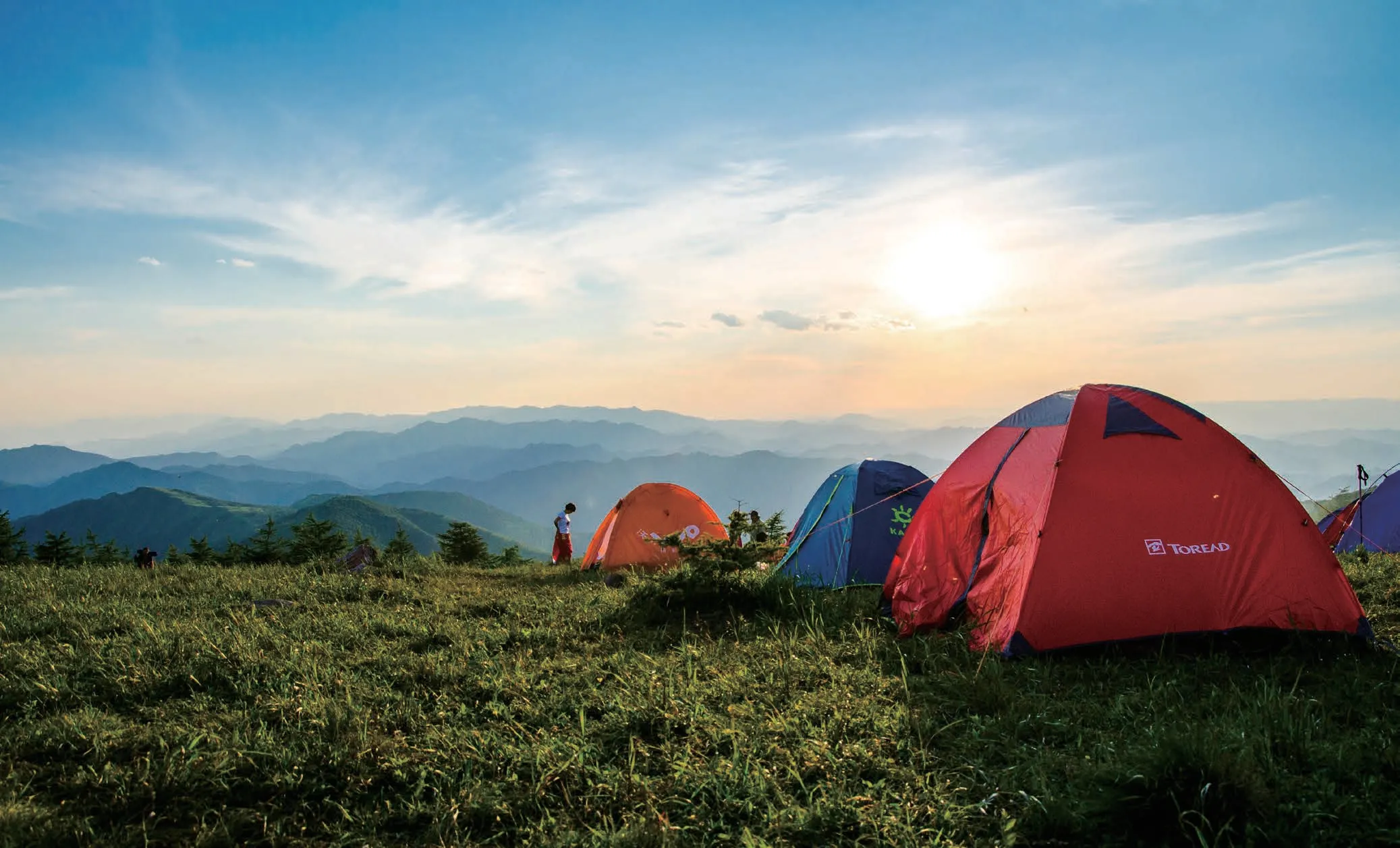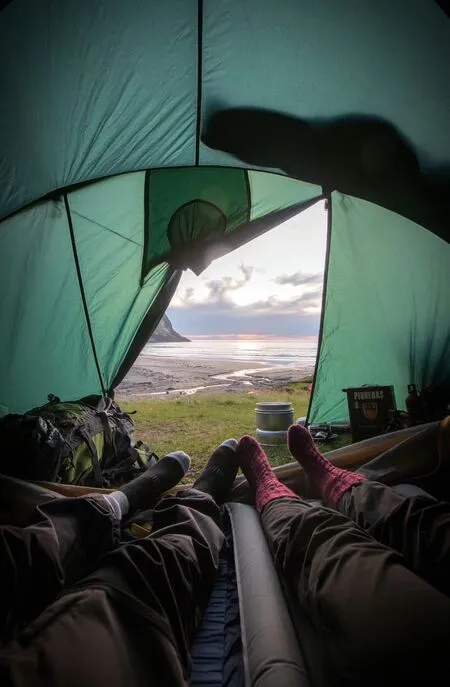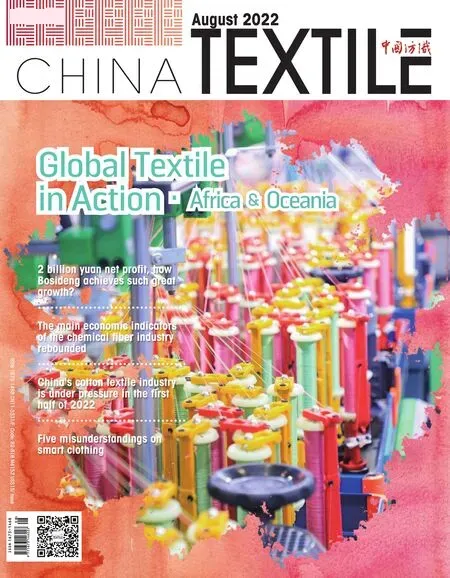How long can camping be popular in China?
By Zhong Mengxia
On holidays, go camping with several friends is becom—ing a new recreation for domestic travel enthusiasts. Dur—ing the pandemic period, restricted by the strict prevention control and social distance, this tourism consumption and leisure mode characterized by localization and short distance catered to people's desire to travel and the people’s inner demand of go on a road trip, which also open up another consumption space for domestic tourism industry.
According to the data released by IIMedia Consulting, the domestic camping market grew rapidly in 2021, with a growth rate of 78% and a market size of 29.9 billion yuan. It is esti—mated that this f igure will reach 35.46 billion yuan in 2022. As a simple leisure activity, camping not only provides a respite for the tourism industry, but also provides a new track for domestic textile enterprises. Especially with the national and local policies to support and encourage the development of campsites, the investment from many textile enterprises in R&D and promo—tion of camping products is increasing continuously.

Increasing demand
Since the beginning of 2022, sales of camping tents, moisture—proof mats, sleeping bags and other products have continued to rise. According to the report released by JD Institute of Consumption and Industrial Development recently, since April, the click rate of camping products in JD has increased by 145%year—on—year, and the turnover of tent/mat products has increased by 229%. Products to improve camp—ing quality have also attracted a lot of attention from consumers, and the turnover of awning tents has increased nearly four times year—on—year. The sales of some entry—level products for outdoor camping,such as simple tents, continue to rise, indicating that a large number of people are joining the camping crowd.There is a great demand for wind—proof, sun—proof,waterproof, wear—resistant, quick—drying, breathable,temperature—regulating and other functional products in the market. As far as textile enterprises are con—cerned, these new consumption demands require high technology and craft of fabrics, which is not only a new business opportunity, but also the focus of R&D.
The domestic market is forming
Some international brands sense the opportunities and are increasing their efforts to promote products in the Chinese market. Camping is a new industry in China,and many consumers may not choose high—price goods.Developing camping products more suitable for entry—level consumers in China is the development goal of some enterprises. At the 4th China International Import Expo, Decathlon released car roof tent for the f irst time.Liu Shujiong, brand director of Decathlon camping sports,said that this is the first time Decathlon has launched roof tent products in the Chinese market.

In the competition with international brands, do—mestic brands have entered the fast lane. Most tents produced by Zhejiang Mugaodi Outdoor Products Co.,Ltd. were doing OEM products in the past. In 2021, the revenue of Mugaodi's domestic private brand business exceeded 306 million yuan, a year—on—year increase of 90%, far faster than the growth rate of overseas busi—ness of 28%, and its proportion in the main business has increased from 25% in 2020 to 33%. In the first quarter of this year, Mugaodi's export business increased by 44% year—on—year, while its domestic brand business increased by 98% year—on—year.
Exploration of international market
For domestic market, which is still in the early stage of camping economic development, Chinese textile en—terprises that produce and operate camping products must be cautious in the transformation, and balance the proportion of domestic and international markets, so that they can operate more stable. Camping industry is very popular in Europe and America, and it has a mature de—velopment with a complete operation system. Camping has become a part of European and American life, but the habit of Chinese consumers has not been cultivated.
Affected by the pandemic, camping is also very popular overseas. According to the data, in 2021, the demand for felt cloth and tents in China was intense in overseas markets, with the export reaching USD 4.4 bil—lion, a year—on—year increase of 49.6%. In the first four months of this year, felt cloth and tents surpassed masks to become the largest export products in the industry,with the export volume increasing by 27.2% year—on—year. Recently, a foreign trade outdoor products company in Jiangsu is working overtime to make a batch of tents for Europe market. According to the person in charge, the company mainly focuses on export, and the domestic tents account for a relatively small proportion. At present,the company's orders in Europe have been scheduled for June next year, and compared with the same period last year, the orders received have increased by 100%, how—ever, due to the supply shortage, the production capacity is not enough. China's textile enterprises should not only seize the domestic market opportunity of camping, but also stride towards a broader international market.
Opportunities and challenges
Every industry has a cycle, the outdoor industry is no exception. The current camping fever in China is ac—cidental event. In America, camping has a history of over 150 years. In America, camping is not only a relaxing recreation, but also a process of experiencing and gaining self—awareness. The reason why the United States has become the largest camping market in the world is that,besides the awakening of people's consciousness, there are also conditions such as the popularization rate of cars,shortened working hours and the large number of na—tional parks. Compared with the U.S. Japan has more his—torical sites for tourists to visit. In the late 1990s, camp—ing, a leisure way, met the needs of Japanese families for relation building, and provided families with a lovely parent and child time. The combination of Japanese brand and camping concept has also successfully created many high—end brands with quality of life for the country.
During the ups and downs of the outdoor market,many enterprises have successfully crossed the cycle.Without exception, these enterprises have outstanding performance in functionality, fashion and culture. Func—tional product based on the innovation of enterprises.For example, the properties of products related to func—tions such as warm performance, waterproof, sunscreen,ventilation, safety, etc. The core value of fashion is differ—entiation. By imitating and getting specific label, we can differentiate the people around us and adjust our social relationship with others. In Asian countries, differentiated label represents a fashionable and extravagant lifestyle in some ways. Culture is the common cognition that brands gather a group of people. Cultural attribute is the cross—brewing of a landmark event, brand community activities, brand strong spirit, etc. For example, Burton's snowboarding culture, Snow Peak's “outdoor is life", Pa—tagonia's environmentalism. These well—known outdoor brands have achieved the extension from functionality to culture through service innovation, and successfully crossed the industry cycle.
Compared with the long development history of foreign camping brands, domestic camping brands are still in the initial stage and face challenges. From the simplest aspect of production, there is a relative shortage of experienced and capable R&D personnel in domestic camping industry at present. All kinds of camping equipment in foreign countries already have related products, while the domestic camping industry started late and has great limitations in creativity.Even creativity aside, the simplest example is that, camping products sewing workers need to be trained for many years,and the shortage of skilled workers is a difficult problem for domestic outdoor enterprises.


